Occasional Ramsgate Writings Donald G Long | Click here to buy the book or veiw our other local books When I produced this book it occurred to me that the decedents of the people named in it might want a means of communicating with each other, if you click here you can leave comments for others to see, you don't have to join anything or fill in any forms, you can even comment anonymously should you wish to.
Occasional Ramsgate Writings Donald G Long | MOUNT ALBION HOUSE, RAMSGATE | ST PAUL'S CHURCH KING STREET, RAMSGATE | HERESON SCHOOL, RAMSGATE | HERESON AND HOLLICONDANE | CHATHAM HOUSE COLLEGE 1797-1917
ST PAUL'S CHURCH KING STREET, RAMSGATE
ST PAUL'S CHURCH
KING STREET, RAMSGATE
In the early 1870s it had become apparent that the people of King Street and those living in surrounding roads were not attending divine worship at their Parish Church (St George's). Upon investigation it was found that these people of the poorer, working class, found themselves out of their depth at St George's, while Holy Trinity was very much the home of the upper class with its full choral services, advertised in the local press as being of Cathedral type.
Two curates of the Parish Church, the Rev. J.M. Braithwaite, later Vicar of Croydon, and the Rev. R. Patterson, came up with the idea of building a Mission Church: 'If the people will not come to us,' they said, 'we will go to them.' King Street alone at this time (1870) had no less than fourteen pubs in it and if any area had need of mission work it was King Street. These zealous young clergy- men, with the help of the Vicar of Ramsgate, Canon Richard Elwyn, built their mission church, which was dedicated to St Paul. The first stone was laid on 18th November 1873 by the Rt. Rev. Edward Parry, Bishop of Dover, on a parcel of land which was known as Ramsgate Farm and Wallis Farm. The Title Deed transferring the land to the Ecclesiastical Commissioners was dated 13th February 1873. The church, seating 250 people, was built at a cost of £1,700, raised by public subscription. It was designed by Mr Robert Wheeler of Tunbridge Wells and built by Messrs Smith & Son of Waterloo Villa, Ramsgate.
On 9th May 1874 the Architect for the Ecclesiastical Commissioners wrote as follows: The Mission Church proposed in this case is very lightly constructed, but considering it as a comparatively temporary structure, I see no objection to the design.' He further advised on the strengthening of 'the iron roofs'. However, the Vicar was told this alteration need not delay the consecration.
The completed building, consisting of a nave and one aisle, was 69 feet long, 30 feet wide and the height of the roof was 33 feet. The inside lining of the walls was of red brick with bands of black brickwork, the exterior being of white brick with dressings of Bath stone. The chancel was ornamented with a painting on zinc by Mr R. Thompson. The carving of the lectern, which aroused much interest, was the work of Miss Osborne, sister of the Rev. G. Osborne, one of the curates of St George's.
The church was consecrated by Archbishop Tait on 22nd May 1874. The 'Thanet Advertiser' for 16th May 1874 carried the following passage:
The consecration of St Paul's, King Street, Ramsgate, by the Archbishop of
Canterbury will take place on the 22nd at 11 o'clock. There will be short services in the Church that day at 4, 6.30 and 8pm.'
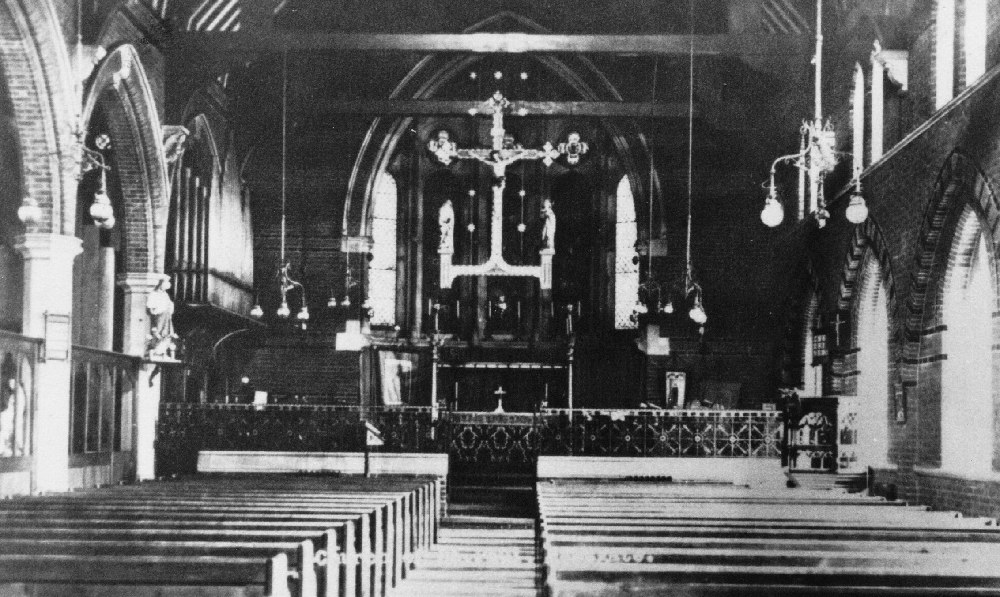 The Nave
The NaveThe sermon at the consecration service was preached by Dr Edward Parry, Bishop of Dover.
When built, the small church was unendowed, but it had been supposed that the Ecclesiastical Commissioners would supply the stipend of a curate. How- ever, it was not forthcoming. In 1881 the Vicar of Ramsgate announced that the Commissioners had refused his application for a grant towards providing a stipend for an assistant curate, despite the Archbishop's personal support. No other course remained open but to make St Paul's a separate parish out of St George's Parish, thus forcing the Commissioners to endow it.
The district served by St Paul's had an expanding population of 4,000 and the need for enlarging the building was urgent. A petition dated 24th October 1884 for enlarging the mission church was presented to the Archbishop of Canter- bury. The new building, to hold some 600 people, was to be exactly similar to the original but longer and wider, so as to form a new nave, whilst the existing building became the north aisle. For this to take place more land was required. Eight cottages, a store, a large yard and an alleyway were all purchased for £485 and offered to the church for £185. The entire length of the enlarged building was 87 feet 6 inches and the width 54 feet. The exterior was of yellow stock bricks with bands of red brick and stone dressings.
There were two entrances for the congregation, one from King Street and the other from Sussex Street: the latter was surmounted by a campanile 60 feet high. The entrance near to the Sussex Street end of King Street was to the vestries, that on the ground floor being for the clergy and the one above for the choir.
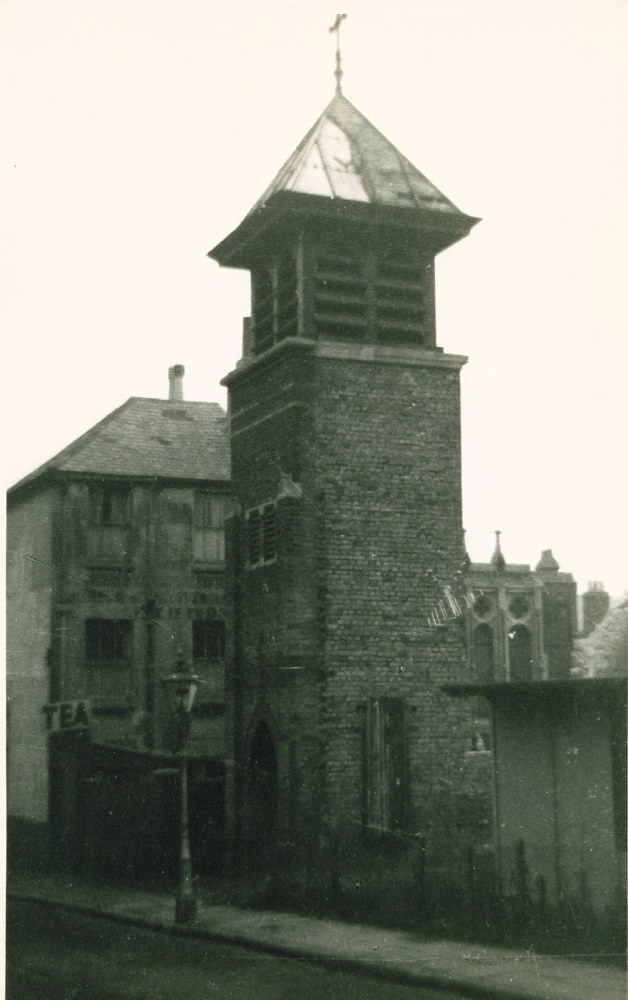
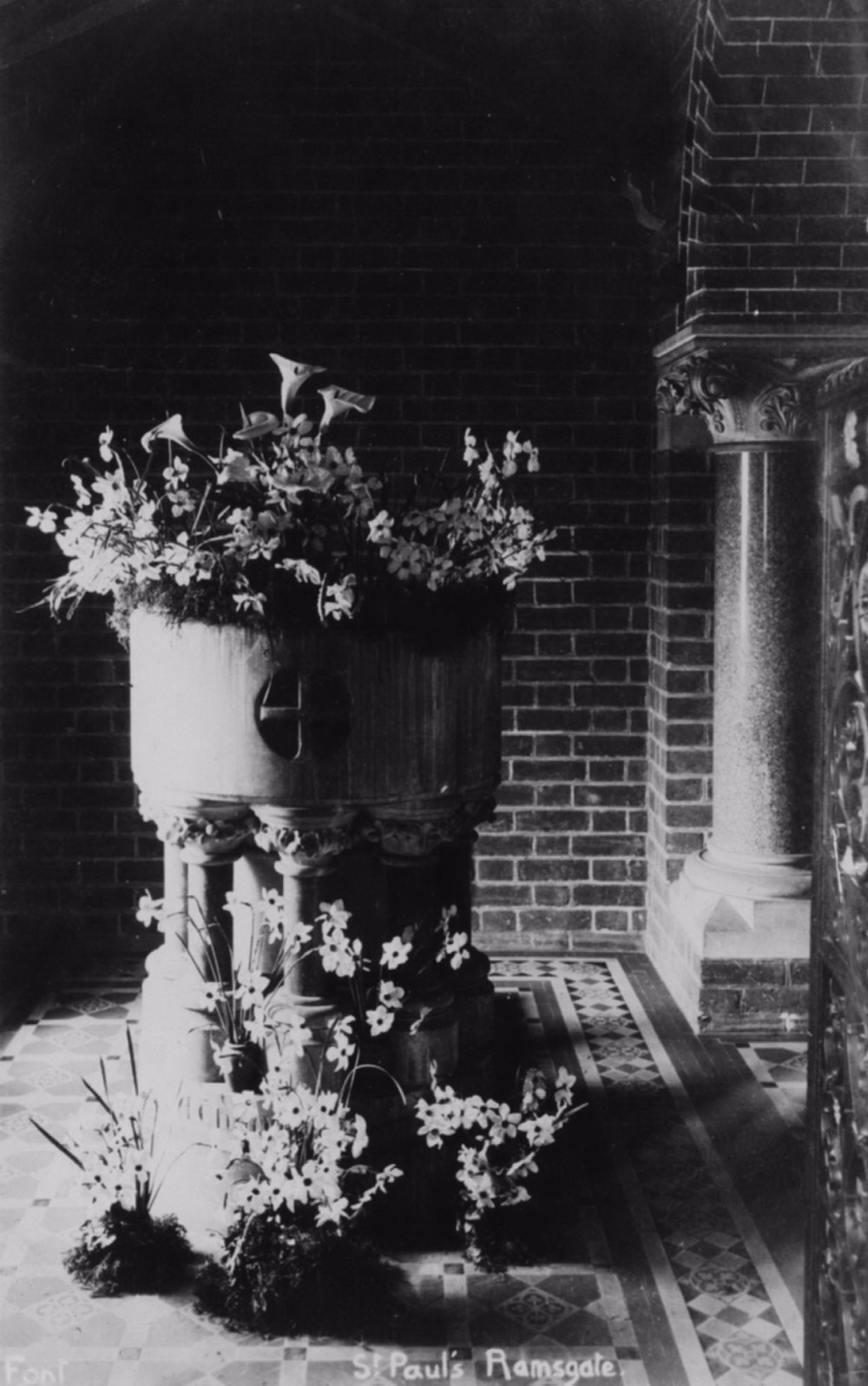 The Bell Tower The Font
The Bell Tower The Font The Chancel, 18 feet in depth, was raised three steps above the nave, and the altar another four. The red granite columns of the old nave became the baptistry separated from the nave by an iron grille-screen matching the chancel screen. The font was simple but attractive, with a circular bowl supported on eight marble columns of Portland stone. The final building had seating for 507 persons with special children's sittings. All seats were free. The new site cost £515, including legal expenses; the builders' contract was £2,385 and with the added cost of the bell tower £120, other specials £100 and the special fund for the bell £30.3s.5d, the total cost of the enlargement was at least £3,120.00.
The first stone of this enlarged church was laid on 29th July 1886 by Colonel King Harman, MP, who was presented with a handsome silver trowel, later to be used as a fish slice. Bishop Parry had also been presented with one in 1873. The consecration of the enlarged church took place on 25th January 1887, St Paul's Day, by the Archbishop of Canterbury, Dr Edward White Benson. In April that year St Paul's was made a separate parish with some 4,000-5/000 souls, with the Rev. C.E. Eastgate as the first vicar. Very soon after being made vicar, Father East-gate guided the parish very strongly towards the Catholic tradition of the Church of England. For twenty-eight years (1887-1915) Father Eastgate led the parish and at one time Archbishop Davidson reprimanded him for giving Benediction.
Before the First World War the parish was renowned for its Christmas parties, held in the school house - now the site of the Duke of Kent public house. At these parties the children, in addition to their tea, were given a present and a quantity of food to take home.
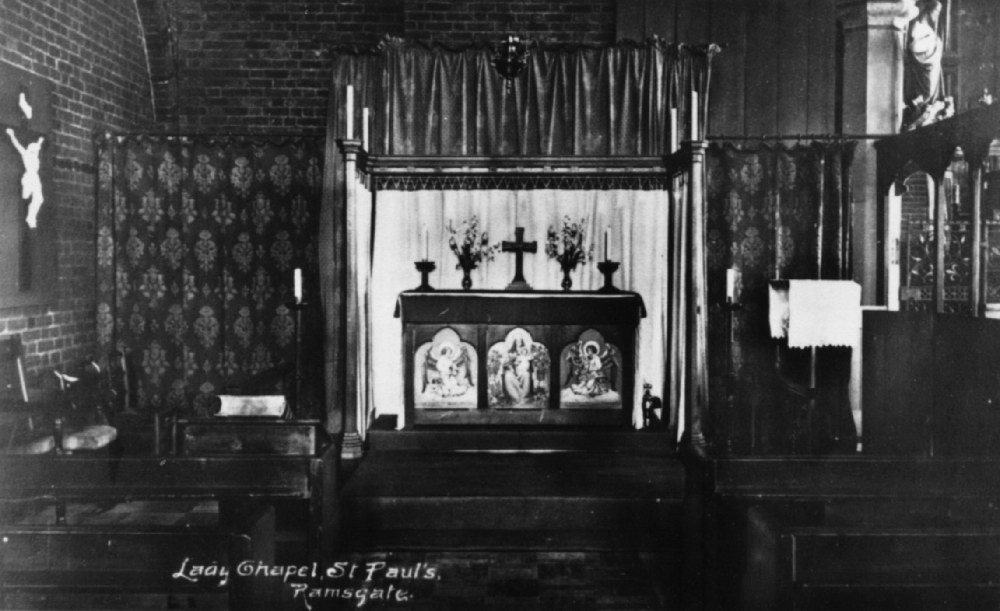
The Lady Chapel
Other customs at the church included the blessing of goose fat at Christmas for the use of those who were sick. Some local people still had some as late as the 1950s - and a common practice for the local youth was to wait outside the church and wheel invalids to their homes upon the promenade for a small fee - usually 3d. The church also had its own football team. St Paul's did well in local leagues and attendance at Mass was the only way to get into the team. All kit was provided by the parish.
In 1919 the Rev. T. Williams became the third vicar. He stayed eighteen years and for the second time in its history a reprimand came from an Archbishop of Canterbury, Dr Cosmo Lang. Father Williams had a silver Pyx, in the form of a dove, which had been given to the church. It is defined in 'A Dictionary of Liturgy and Worship' as 'A particular form of Pyx that has excited antiquarian interest since the last century is that which came into use in England and France in the later Middle Ages, when the blessed sacrament was reserved in a vessel suspended by a chain over the high altar.' (C.E. Pocknee.) This used to be swung - much to the displeasure of the Archbishop, who would not visit the parish. However, the church was well supported and on its 50th Anniversary in 1924 the Archdeacon of Canterbury, the Venerable E.H. Hardcastle (a former curate of St George's) stated in the pulpit, and was reported in the press as saying, that the choir was better than that at the Cathedral.
In 1937, with a new vicar, the Rev. R.C. White, Archbishop Lang came - but he came during the abdication crisis. The abdication was most unwelcome to many Ramsgate people who had been strong supporters of King Edward VIII and it needed a number of mounted police to keep the King's supporters away from the Archbishop and keep the peace.
In the same year a new vestry was built for the choir. This enabled them to process up from the west end of the Church.
By 1939 Britain was again at war and St Paul's days were numbered. Following the Dunkirk evacuation, and with the permission of Archbishop Lang, a number of parish churches in Thanet closed for the duration of hostilities. The population of all three Thanet towns dropped by two thirds, so in Ramsgate St Paul's, St Luke's and St Mary's, Chapel Place, were closed. In Broadstairs St Andrew's, Reading Street, closed and in Margate, St Paul's. In Cliftonville, All Saints', West- brook, and St Augustine's also closed. Unlike all the others, the Churchwardens of St Paul's, Ramsgate, resigned*, as did the members of the PCC, though a band of ladies did go in every week to keep the church clean.
When a single Junkers 88 bomber dropped two bombs, during the air raid of 12th November 1940, no siren had sounded. The south-west corner of the Granville Hotel was shattered by one very large bomb. In Sussex Street eight houses and one garage were destroyed and many others seriously damaged. In fact Sussex Street was all but destroyed and, a little like its great namesake, St Paul's Cathedral in London, St Paul's, Ramsgate, was still there with destruction all around. The locals could indeed be forgiven for thinking the Almighty was looking after their parish church, even though it was for the time being closed. However, by 1943 the Vicar of St George's, the Rev. C.R. Farns-worth, who had been given oversight of the parish by the Vicar of St Paul's, left the town, to be replaced by the Rev. George Bennett. Within two months this oversight had been handed over to the Rev. A.H. Culmer, Rector of Holy Trinity. The oversight was given to Father Culmer because Holy Trinity, Ramsgate, was quite a 'high' Church, and thus had a closer contact with that Parish. By 1945 Father Culmer said that should St Paul's re-open he would lose half his congregation. This one act signed the death warrant of St Paul's.
In 1945, however, the last Vicar, the Rev. R.C. White, expected to return and he invited Mr Sidney Physick to return as organist. Ladies formed a large working party to clean the church, but the then Bishop of Dover, the Rt. Rev. A.C.W. Rose, made it quite clear that it would not re-open. The Vicarage in Truro Road was sold and, as the Churchwardens had resigned in 1940, there was not a single representative of the parish with any authority. The people of St Paul's were by then spread far and wide, with some at St Laurence and St George's as well as Holy Trinity, and were unable to form a united front - and so St Paul's remained closed.
The church had closed in July 1940 and five years later came the decision that it would stay closed, but it took another fourteen years before the Diocese could with any confidence go ahead with its long-held plan to demolish it. They had to wait until that power base, which even then could have saved it, had died or left the area. The Diocese has much to answer for. They never justified their action and would not even talk to anyone on the subject.
The following was published in the 'London Gazette' on 31st January 1958:
'Union of Benefices and Parishes. The Benefice of Saint George Ramsgate and the Benefice of Saint Paul Ramsgate shall be permanently united together to form the United Benefice of St George Ramsgate. The section of the Parish of St Paul which lies to the south-east of the middle of King Street shall be severed from the Parish of the united benefice and be annexed to the parish of Holy Trinity Ramsgate. The church building of the Parish of St Paul to be demolished as soon as conveniently may be the case.' This was duly done in January 1959.
Appendix
Records of some of the furnishings are as follows:
Four corbel stones in the sanctuary, carved and bearing angels - lost in the demolition.
Foundation stone - in St George's Church
The Rood presented in 1894 by Joshia Palmer - no record
The Pulpit - to the memory of the Rev. John Masterman Braithwaite, one of the founders of this church AD 1890 - no record
Lectern of wrought and painted iron designed by Wm. White, Esq., FSA, 1882 - no record
Windows - removed to St Mildred's Church, Canterbury. Other windows are in St Gabriel's, Rough Common, Canterbury.
The bell went to St Christopher's Church, Newington
The vestments and majority of other goods and ornaments to Holy Trinity and St George's, Ramsgate.
The Vicarage was in Truro Road, Ramsgate. Today it is council flats.
Clergy
Founders: Rev. J.M. Braithwaite
Rev. R. Patterson
Vicar of Ramsgate: Rev. Canon Richard Elwyn
1887 St Paul's made a Parish Church
Vicar of Ramsgate: Rev. Canon Charles Edward Shirley Woolmer
Vicars of St Paul's
1887-1915 Rev. C.E. Eastgate
1915-1919 Rev. A.F. Walters
1919-1937 Rev. T. Williams, BA
1937-1940 Rev. R.C. White
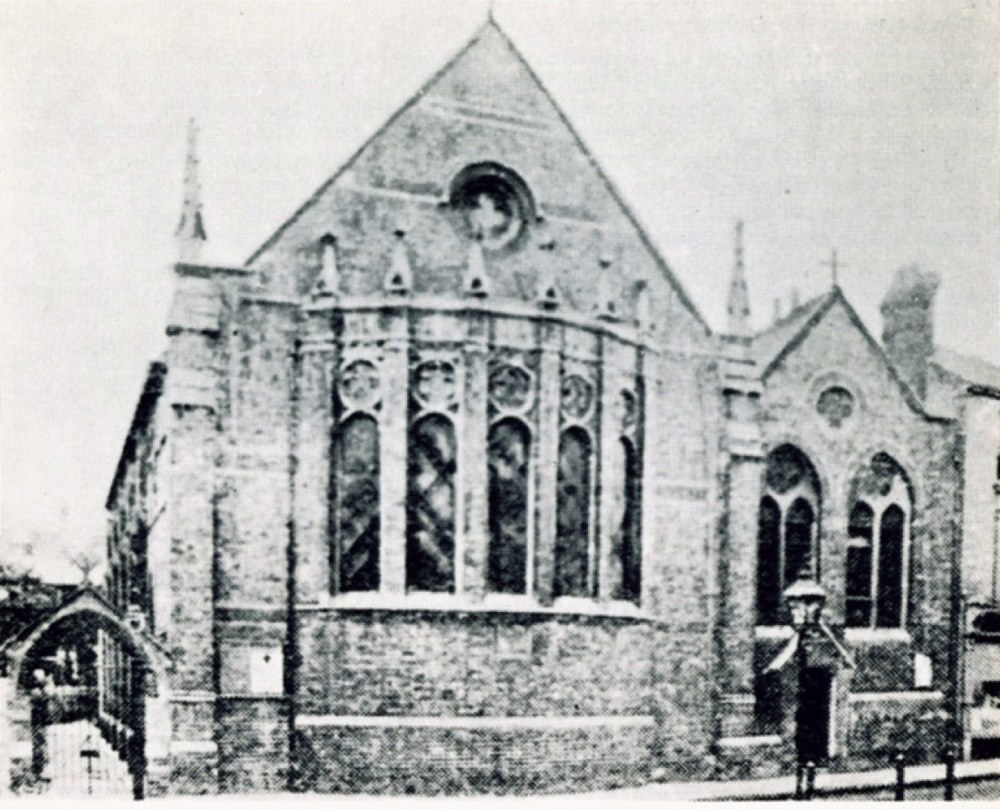
A Rare Picture of the Exterior
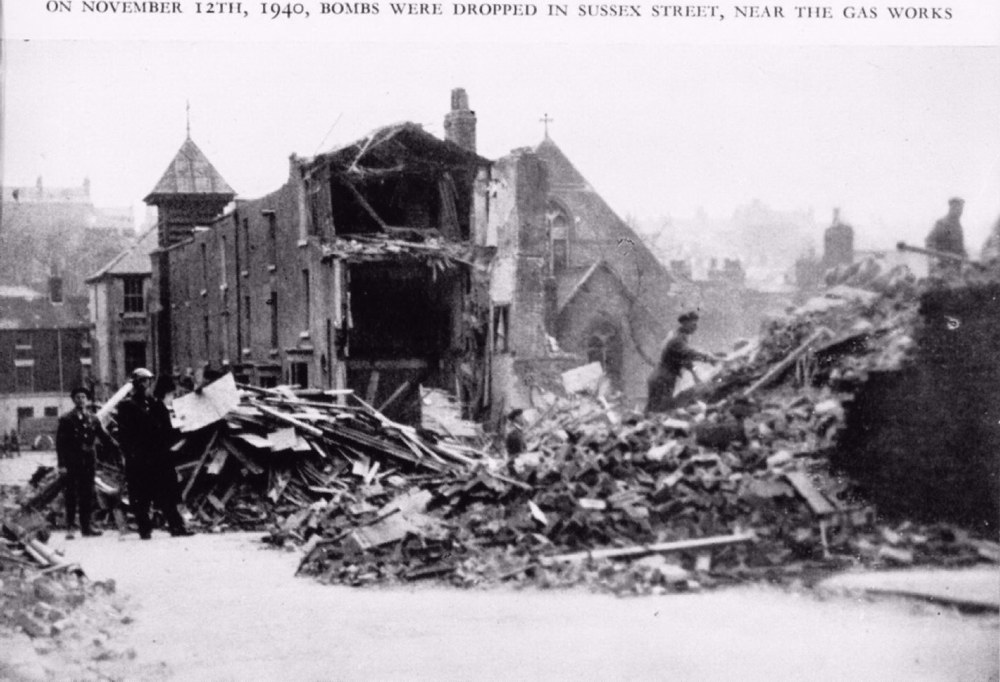
Bomb Damage Near St Paul's November 12th 1940
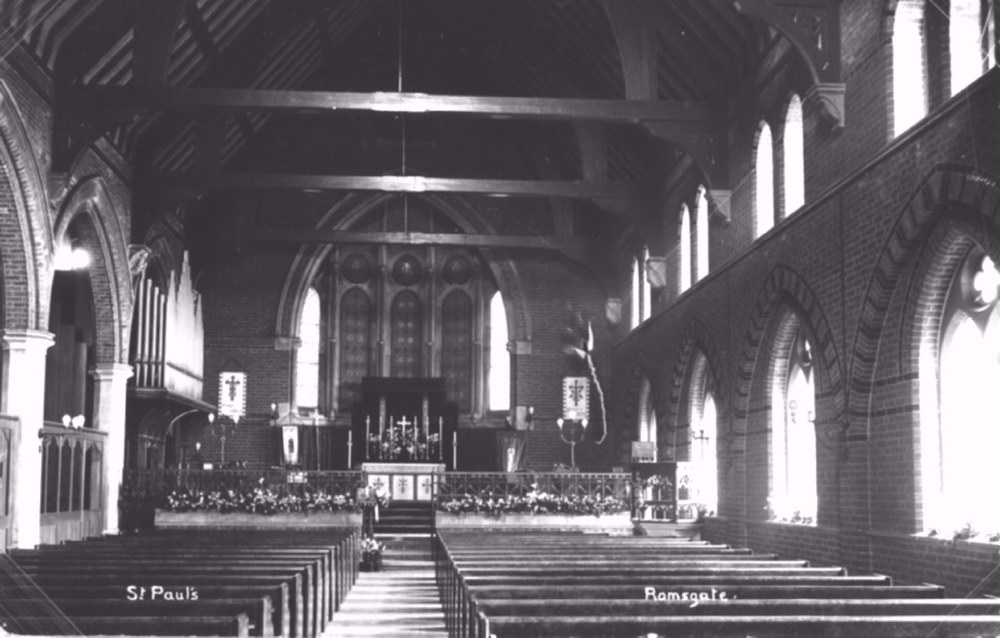
The Nave